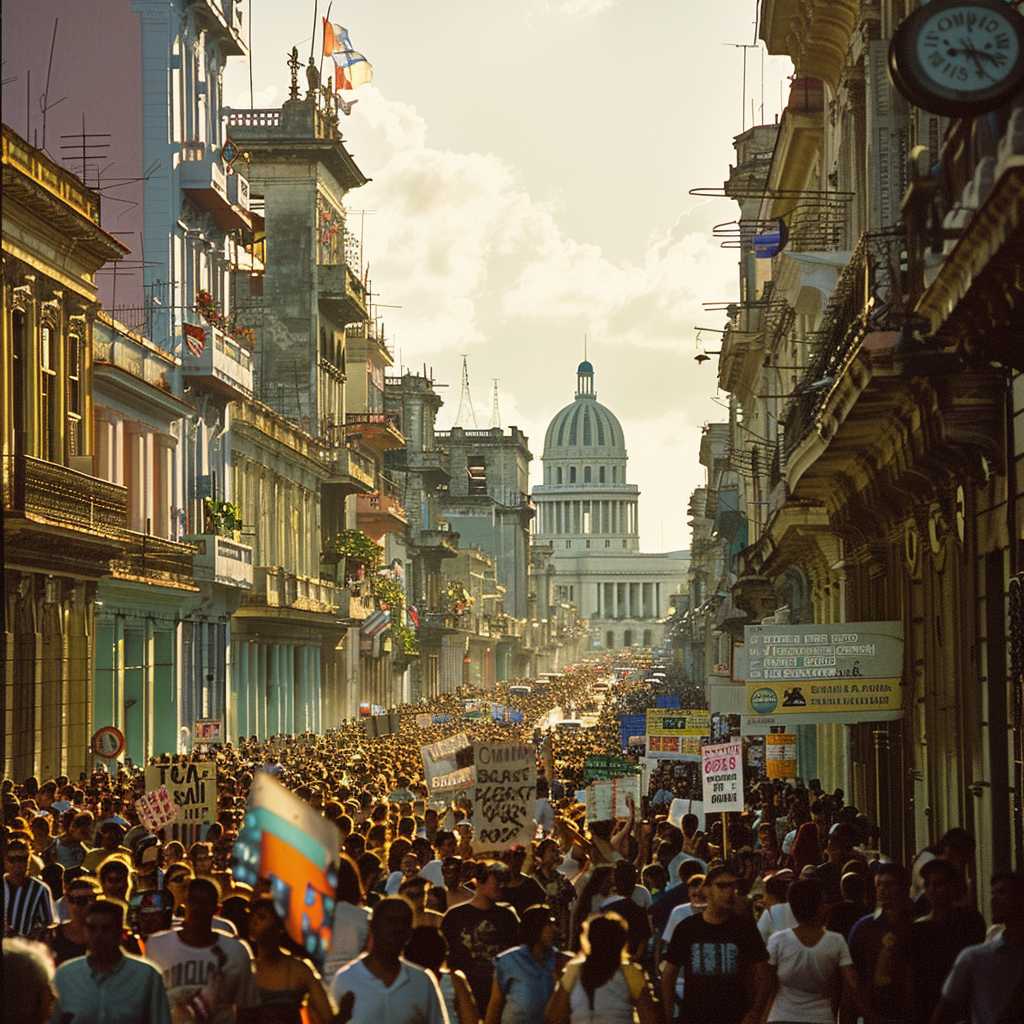Understanding the 2020-2021 Cuban Protests: Contexts and Implications
The Cuban protests that emerged in 2020 and carried into 2021 stood as some of the most significant upheavals within the communist nation in decades. They represented a society grappling with profound economic struggles, political frustrations, and the quest for greater freedoms. These protests weren’t merely an isolated chain of incidents but a manifestation of complex internal challenges and external pressures, which contributed to a nationwide outcry.
Historical Context of Dissent in Cuba
Understanding the Cuban protests requires a brief look into the historical context of dissent on the island. Since the Cuban Revolution in 1959, which saw Fidel Castro’s ascent to power, Cuba has been under communist rule. The state has traditionally maintained strict control over the media, economy, and civil society. Challenges to government authority have often been met with repression.
In more recent history, minor protests and acts of civil disobedience have occurred, but Castro’s government managed to maintain a firm grip on power. The transfer of authority to Raúl Castro in 2008, and subsequently to Miguel Díaz-Canel in 2018, somewhat softened the image of the historically rigid leadership yet didn’t substantially alter the nation’s governance or approach to dissent.
Economic Hardships Intensified by COVID-19
One of the primary catalyzers for the 2020-2021 protests was extreme economic hardship. Cuba’s economy, heavily reliant on tourism and exports like sugar and tobacco, faced drastic downturns due to global COVID-19 travel restrictions. The pandemic exacerbated an already struggling economy suffering from longstanding U.S. sanctions.
The shortages of basic goods like food and medicine escalated throughout COVID-19, deepening the everyday struggles of many Cubans. Furthermore, the government’s delayed response to privatizing small businesses and accepting foreign investment has compounded these economic woes.
Demand for Political Freedoms and Human Rights
Coupled with economic discontent was the demand for increased political freedoms and human rights. Over the years, several dissident groups have criticized Cuba’s treatment of political opposition, censorship, and lack of free speech. The protests reflected not only immediate economic concerns but an undercurrent frustration with authoritarian rule and limitations on civil liberties.
With the internet becoming more accessible in Cuba over recent years, activists used social media platforms to mobilize and amplify their cause. The hashtag #SOSCuba became symbolic as it reflected an appeal to the international community about the dire situation on the island.
Government Response and International Reactions
The response by Cuban authorities to the protests straddled a fine balancing act between acknowledging some legitimate concerns expressed by protesters while framing other dissenting voices as being manipulated by foreign influences, namely from the United States. Arrests, government rallies, and extensive propaganda efforts sought to neutralize any sustained dissident momentum.
International reactions varied widely: Some governments came out in support of the Cuban protestors’ demands for freedom and an end to authoritarian rule, while others backed the Cuban government or called for non-interference in Cuban internal affairs. Global human rights organizations were nearly unanimous in condemning crackdowns on protesters.

